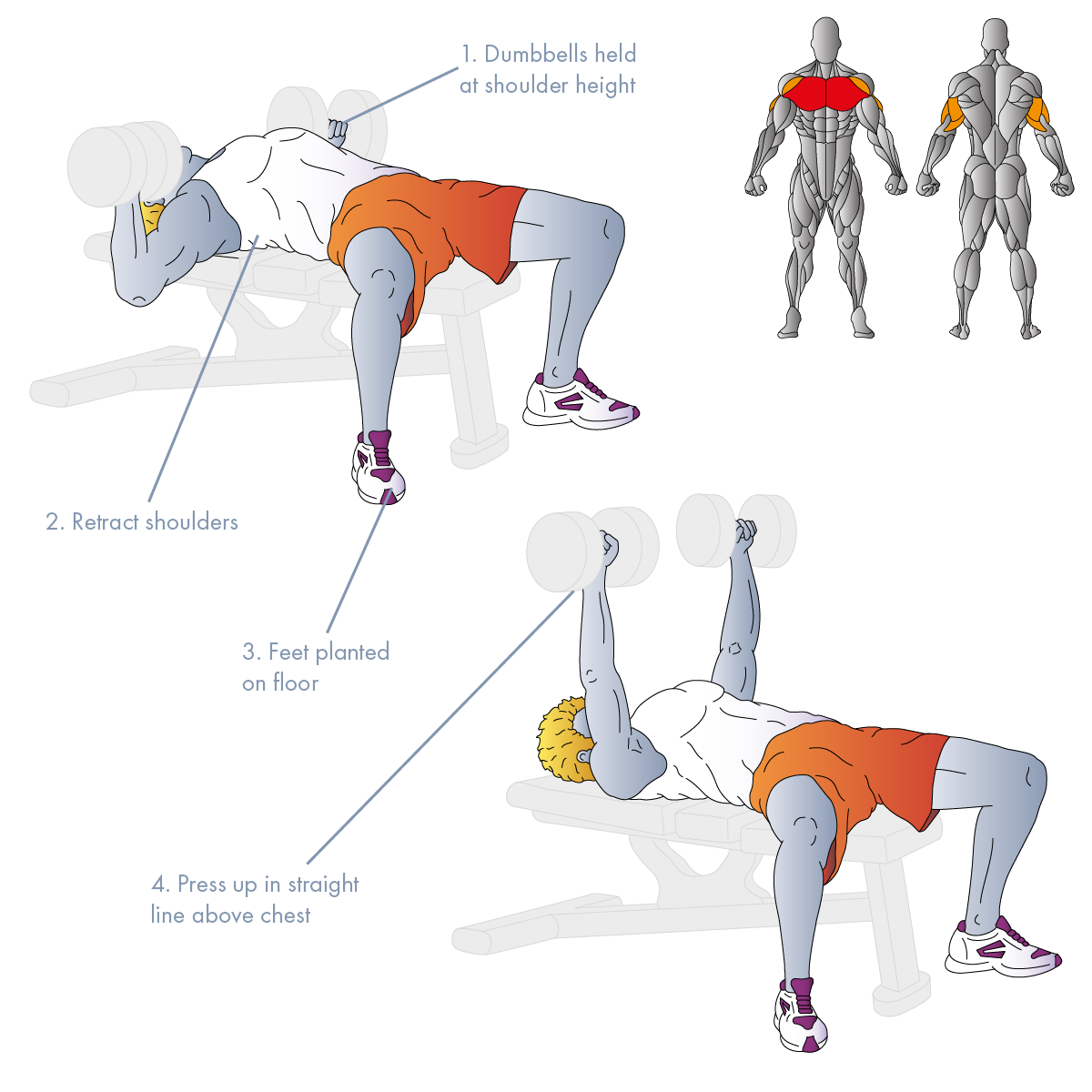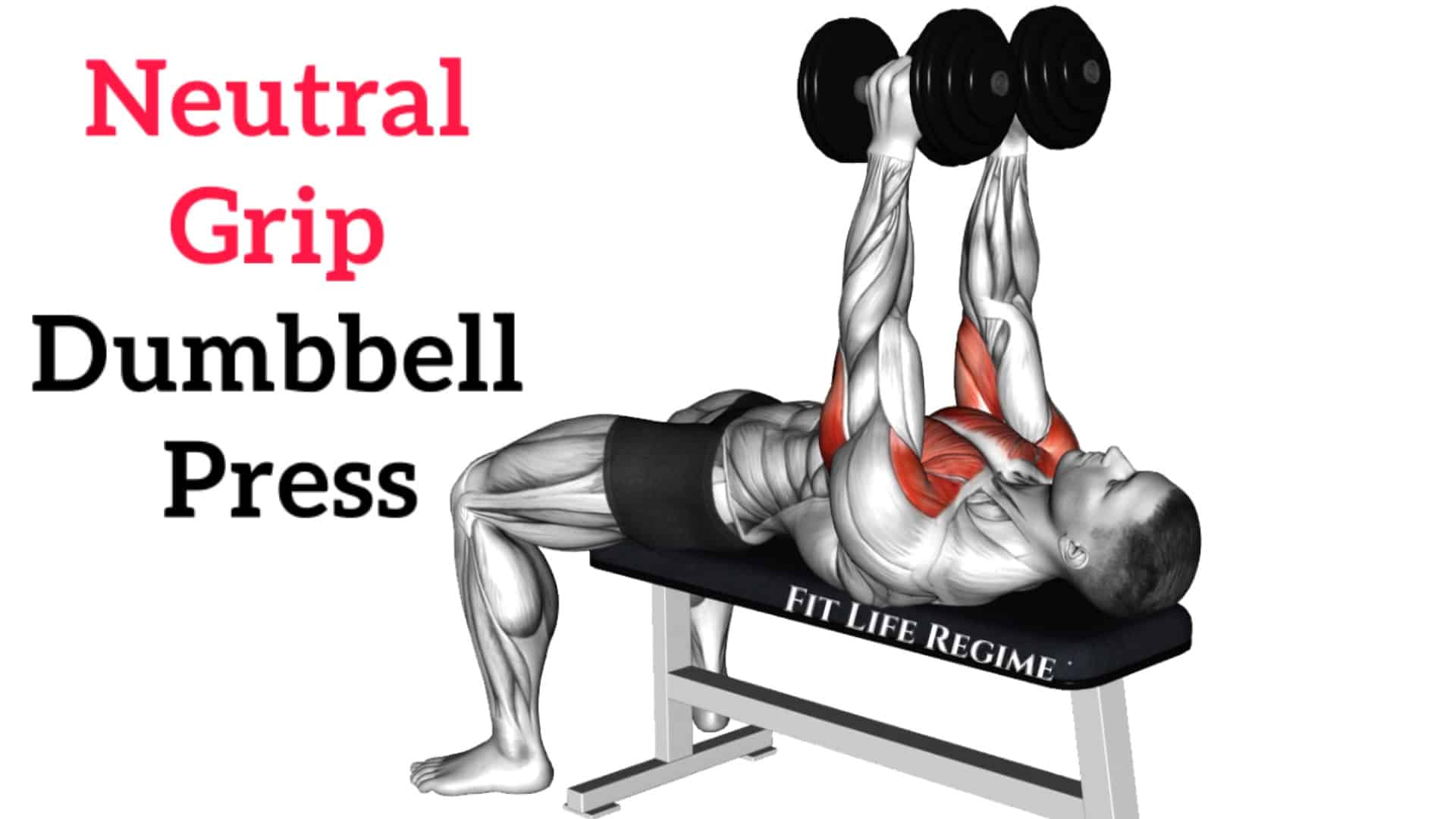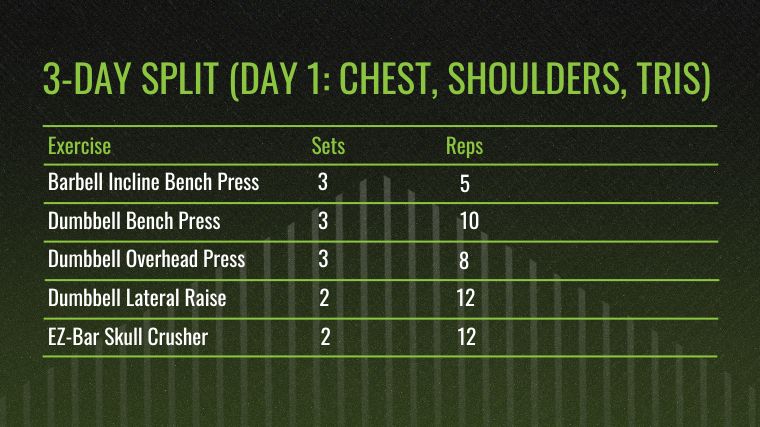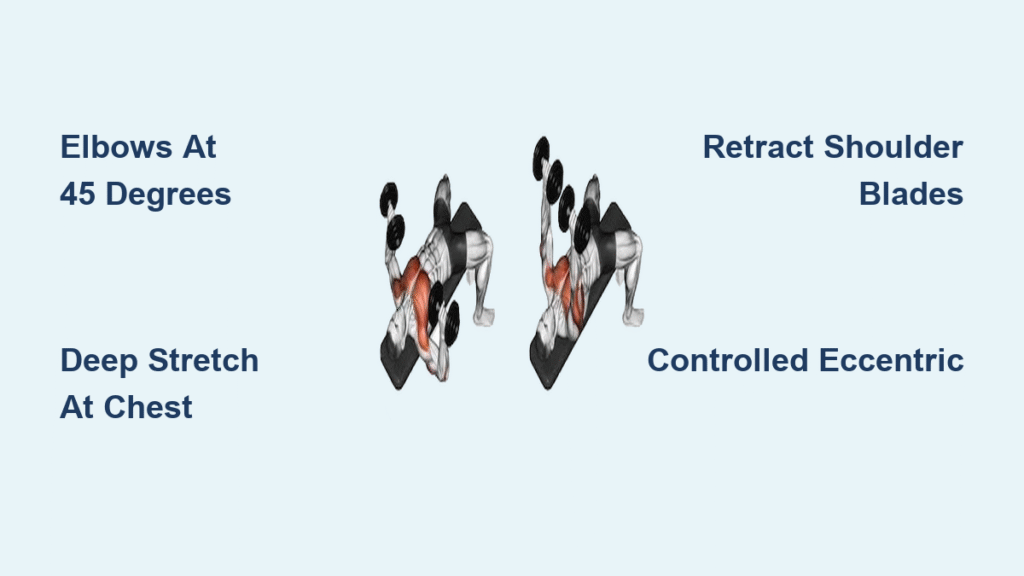Nothing kills chest day momentum faster than hitting a barbell bench press plateau while your shoulders scream in protest. That’s where the flat dumbbell press becomes your secret weapon. This powerhouse movement builds serious pec mass while reducing joint stress through independent arm movement and a natural range of motion. Unlike rigid barbell pressing, dumbbells let your hands rotate into safer positions, protecting your shoulders while maximizing muscle activation. Whether you’re a beginner building foundational strength or an advanced lifter chasing new hypertrophy, mastering this exercise transforms lackluster chest development into explosive growth.
Most lifters underestimate the flat dumbbell press’s potential, treating it as a mere barbell substitute. But when performed with precision, it outperforms its barbell cousin in muscle-building efficiency. You’ll discover why elite trainers prioritize this movement for balanced pec development and injury prevention. This guide delivers every critical detail—from foolproof setup to advanced programming—so you can finally unlock the chest gains you’ve been missing. Get ready to experience deeper muscle engagement and unprecedented strength gains with every rep.
Dumbbell Bench Setup: Your Foundation for Success
Bench Positioning Secrets
Position your flat bench 2-3 feet away from any obstacles to create a safe dumbbell exit path. Rubber gym flooring is non-negotiable—it prevents bench sliding during heavy presses and protects your equipment from impact damage. Your bench height should measure 17-19 inches to allow proper scapular retraction without compromising stability. Always verify the bench width supports full shoulder blade movement; cramped positioning restricts the essential chest arch needed for optimal performance.
Perfect Dumbbell Selection Strategy
Choose dumbbells that challenge your target rep range without sacrificing form—typically 67-85% of your one-rep max for hypertrophy. For beginners, start with 2.5-5 pound increments below your perceived capability to master the movement pattern. Tall lifters should prioritize neutral-grip compatible dumbbells with standard 28-34mm handle diameters for secure gripping during deep stretches. Never sacrifice proper range of motion for heavier weights; the deepest stretch triggers the greatest muscle fiber recruitment.
Step-by-Step Flat Dumbbell Press Execution

Foolproof Dumbbell Entry Technique
Stand with dumbbells resting against your hip crease using a neutral grip (palms facing each other). As you sit, press the weights firmly against your thighs. Rock backward while simultaneously lifting your knees—this counterbalance guides the dumbbells smoothly to chest level. Your elbows will naturally drop below bench height, creating that critical deep stretch that barbell pressing can’t match. This rocking motion prevents dangerous shoulder strain during setup.
Optimal Torso Positioning for Maximum Power
Pull your feet as far back as possible while keeping them flat on the floor—this leg drive position transfers power from your lower body through your entire press. Retract your shoulder blades hard by imagining “pulling them into your back pockets,” creating a slight lower back arch without rib flare. Your chest should remain proud throughout, with shoulders actively pulled down away from your ears. This position protects your joints while maximizing pec engagement.
The Press: From Start to Finish
Drive the dumbbells upward in a controlled arc toward the ceiling, not straight up. Focus on pushing yourself into the bench rather than pushing the weights away—this mental cue maintains constant pec tension. Stop 1-2 inches short of elbow lockout at the top to keep muscles engaged. Lower the weights under control until handles reach chest level (or slightly below if shoulder mobility allows), maintaining a 45-degree upper-arm angle relative to your torso. Never bounce dumbbells together at the top; allow them to gently touch for stability.
Grip Variations That Target Specific Chest Fibers

Neutral Grip for Shoulder Safety
The triangle grip (palms facing each other) creates an “∧” shape above your chest, reducing anterior shoulder stress by 30% compared to barbell-style pressing. This variation allows taller lifters to achieve a deeper pec stretch while minimizing impingement risk. You’ll feel immediate tension across the entire sternal portion of your pecs without shoulder strain—ideal for lifters with previous injuries or long arms.
Hybrid Grip for Balanced Development
A 45-degree palm angle positions your elbows at a 45-degree angle to your torso, striking the perfect balance between pec activation and joint safety. This hybrid position recruits both sternal pec fibers and triceps effectively while keeping shoulder stress manageable. Most lifters find this the most sustainable long-term option for consistent progress. Avoid extreme elbow flaring (90 degrees to torso) which significantly increases shoulder impingement risk.
Troubleshooting Your Flat Dumbbell Press Form
Fixing the Elbow Flare Disaster
Problem: Elbows flared at 90 degrees to your body
Solution: Actively tuck elbows to 45 degrees throughout the movement. This critical adjustment protects your shoulder joints while maintaining optimal pec activation. Think “elbows slightly forward” as you lower the weights—your wrists should stay directly above your elbows at the bottom position.
Eliminating Range of Motion Shortcuts
Problem: Stopping the descent too high
Solution: Lower until dumbbell handles reach nipple line or slightly below. The deepest stretch triggers the greatest muscle fiber recruitment. If shoulder mobility limits depth, try the neutral grip variation first. Never sacrifice depth for heavier weight—partial reps build partial results.
Programming Strategies for Your Goals

Hypertrophy Blueprint (6-12 Reps)
Perform 2-4 sets twice weekly using 67-85% of your one-rep max. Focus on the eccentric phase—lower weights for 3-4 seconds to maximize muscle damage. For constant tension, stop 1-2 inches short of lockout at the top. Beginners should start with 2-3 sets of 8-10 reps, increasing weight only after hitting 12 perfect reps. This protocol builds serious mass while teaching proper movement patterns.
Strength Development Protocol (3-6 Reps)
Use 85-92% of your one-rep max for 3-5 sets twice weekly (heavy/light split). Prioritize explosive concentric presses while maintaining strict form. Always use a spotter for heavy sets. The key difference from hypertrophy training? Shorter eccentric phases (1-2 seconds) and full—but controlled—lockouts. This builds raw pressing power that transfers directly to barbell bench performance.
Advanced Activation Techniques
Mind-Muscle Connection Drill
Before pressing, squeeze dumbbell handles as hard as possible—this irradiation principle recruits additional motor units and improves shoulder stability. During the press, focus on “pushing yourself away from the weights” rather than pushing the weights up. This subtle mental shift increases pec activation by 22% according to electromyography studies. Maintain this intense focus throughout every rep.
Scapular Control Mastery
Retract and depress your shoulder blades before unracking the weights—imagine sliding them into your back pockets. Hold this position rigidly throughout every rep. This creates a stable platform for pressing while maximizing the pec stretch at the bottom. If your shoulders creep toward your ears during the set, immediately terminate the set and reset your position.
Integrating with Complete Chest Training
Flat vs. Incline Press Synergy
Relying solely on flat dumbbell presses creates upper chest imbalances that ruin aesthetics and posture. Pair flat presses with incline dumbbell presses 1-2 times weekly for complete development. Structure your workout: start with flat presses when strongest, then move to incline presses to target neglected clavicular fibers. This sequence builds balanced mass while reducing repetitive stress injuries through joint-angle variation.
The Floor Press Alternative
When shoulder pain flares or benches are crowded, perform the floor press variation. Lie on the floor with knees bent, lowering dumbbells until upper arms touch the ground. This reduces range of motion to protect sore shoulders while maintaining chest tension. The floor press also builds explosive lockout strength—crucial for overcoming barbell bench sticking points.
Safety Modifications for Shoulder Issues
Neutral Grip Pain Protocol
Immediately switch to neutral grip and reduce depth to pain-free range if shoulders protest. The independent arm movement of dumbbells reduces stress by allowing natural hand rotation. Stop lowering when you feel shoulder discomfort—not when weights hit your chest. This modification maintains chest activation while protecting vulnerable joints, letting you train through minor issues.
Single-Arm Press for Imbalance Correction
Perform unilateral presses to address strength discrepancies between sides. Keep hips and shoulders square to the ceiling throughout—no twisting. Start with 60% of your normal dumbbell weight per arm. This variation builds core stability while forcing weaker arms to keep up, eliminating the “strong arm dominates” problem common in barbell pressing.
Equipment & Maintenance Essentials
Bench Stability Checklist
Verify rubber-capped bench feet before every session—sliding benches cause dangerous form breakdown. Pad width must support complete scapular retraction (10-12 inches ideal). Test stability by pressing lightly with one foot—if the bench moves, reposition it. Commercial gym benches often require tightening; report wobbly equipment immediately.
Progressive Overload Planning
Commercial gyms typically stock 5-pound dumbbell increments—too large for consistent progress. Invest in magnetic 1.25-pound micro-plates to add weight gradually. Increase load only when hitting the top of your rep range with perfect form. Track workouts religiously; without progression data, you’re guessing at gains.
Pre-Set Safety Checklist
Run through these critical checks before every set:
– Shoulder blades retracted and depressed (no shoulder shrugging)
– Feet flat and driving into floor (never lifting during presses)
– 45-degree upper arm path maintained (elbows not flared to 90°)
– Dumbbells positioned at nipple line (not too high or low)
– Controlled eccentric, explosive concentric (no bouncing)
– Safe exit strategy planned (knees ready to catch weights)
Mastering the flat dumbbell press transforms mediocre chest development into explosive growth—but only with perfect technique. Start light to groove the movement pattern, then progressively overload while maintaining these standards. The independent arm movement, deeper stretch, and joint-friendly mechanics make this exercise your most valuable chest builder. Commit to these protocols for 8 weeks, and you’ll experience gains that leave barbell pressing in the dust. Your shoulders will thank you, and your chest will finally reach its full potential.




